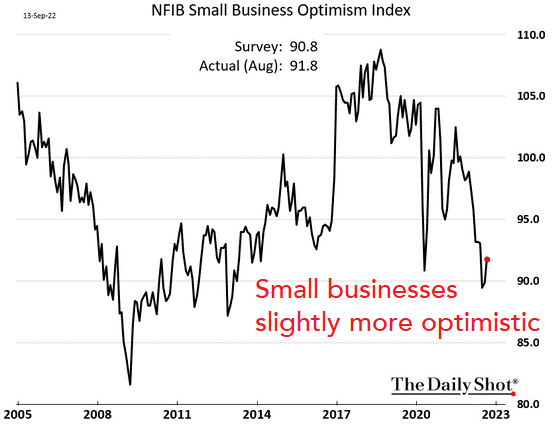Hello all - we hope you had a nice November. Hard to believe it’s already December!
Stocks were up again this month, making it two months in a row of gains. That’s the first time that’s happened all year. The Dow was higher by 5.7%, the S&P 500 rose 5.4%, and the Nasdaq, which has a higher concentration of tech stocks, gained 4.4%.
Stocks were up again this month, making it two months in a row of gains. That’s the first time that’s happened all year. The Dow was higher by 5.7%, the S&P 500 rose 5.4%, and the Nasdaq, which has a higher concentration of tech stocks, gained 4.4%.
Here’s a closer look at the markets this month.
A trend we’ve seen this year is when the U.S. Dollar moves lower, stocks move higher. That held true again in November. The dollar actually had its worst month since 2009.
There wasn’t a lot of news affecting the markets this month. Investors continue to look to the Fed for clues on their stimulus withdrawal, and news out of China had an impact, too.
____
CHINA
We’ll start with China, where news from the country impacted markets.
China has been in and out of lockdowns ever since Covid began. Currently, financial company Nomura estimates at least 25% of the population is under some form of lockdown. This has made it difficult to get certain products made and it’s meant less “stuff” getting bought by the Chinese people.
Rumors increased this month that the strict lockdowns would be reduced or removed, which caused markets around the world to rally. The rumors were then denied by the government and markets pulled back. This back-and-forth happened a couple times during the month.
Its unclear where the Chinese currently stand with their lockdowns, but one thing can be sure is that the people are near their breaking point. Protests are appearing around the country and are being swiftly tamped out by the police. We’re not sure if this will lead to any meaningful change, but the markets seem optimistic.
____
THE FED
The Fed kept the market on its toes this month.
November opened with a Fed policy meeting where they continued pulling back on their stimulus by raising interest rates. Investors figured the Fed will start slowing their pullback of stimulus, but comments from Fed chief Powell suggested otherwise. Stocks dropped sharply on the news.
As the month progressed, many regional Fed presidents made comments in the press – some said the Fed should be more aggressive, some said less aggressive, and the market fluctuated each time.
On the last day of November, Fed chief Powell made comments suggesting they will be less aggressive in their stimulus withdrawal – inte3rpreted as the opposite of what he said at the beginning of the month – and the markets soared on the news.
____
INFLATION
With the Fed so focused on inflation, investors have been paying very close attention to it, too.
Investors were looking for inflation to come down over the past month, but the CPI report showed inflation increasing again when looking at it month-by-month.
On a yearly basis the inflation level is lower, which investors were happy to see.
Here’s a look at the “core” metric - which excludes food and energy - on a monthly basis:
Inflation at the business level (the PPI) moved lower on an annualized basis, but it still rises month-to-month.
____
OTHER ECONOMIC DATA
Economic data released this month was mixed.
An indicator that has accurately predicted recessions is the relationship of bond yields at different maturities. We’re not going to go into what any of that means – its far beyond the scope of this commentary. Just notice in the chart below that when the gold line dips below zero, a recession has always followed (a recession is indicated by the gray shading).
Right now, this indicator is strongly signaling that a recession is coming.
On the positive side, retailers are still showing tremendous growth. That isn’t something you see when a recession is looming. Amazon, for example, saw its best Thanksgiving shopping period ever. This is a positive sign.
Getting into economic releases this month, both the manufacturing and service parts of our economy showed weakness.
We don’t talk about housing often, but home prices continue to turn lower.
Home prices traditionally rose at the same rate as people’s incomes. In the chart below, you can see just how disconnected they have become in recent years.
Home prices traditionally rose at the same rate as people’s incomes. In the chart below, you can see just how disconnected they have become in recent years.
Retail sales were slightly higher from the previous month.
Durable goods - which are items with a longer life, like a phone or dishwasher – turned lower.
Consumer confidence kept moving lower.
Confidence at small businesses turned lower after three months of improvements.
____
Where does the market go from here?
Its tough to tell right now. Stocks are a little on the expensive side, but do have room to run a little bit higher before we start to worry. Comments from the Fed as the month ended helped give the markets a tailwind and this is historically the strongest part of the year. We could see a rise here, but don’t think there is too much upside left.
This commentary is for informational purposes and is not investment advice, an indicator of future performance, a solicitation, an offer to buy or sell, or a recommendation for any security. It should not be used as a primary basis for making investment decisions. Consider your own financial circumstances and goals carefully before investing. Past performance cannot guarantee results.




























































